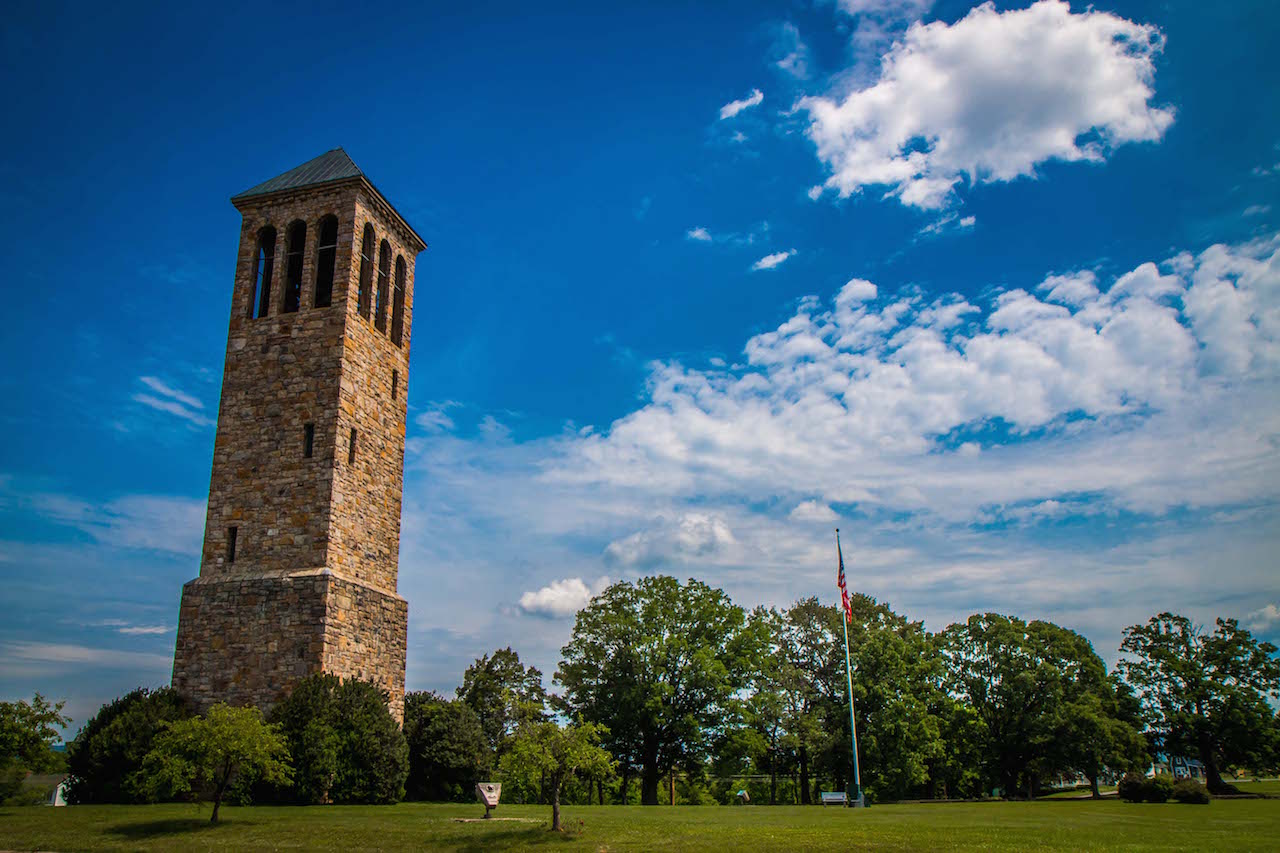[Updated Jun 20, 2023] Located in the heart of Virginia’s picturesque Shenandoah Valley, Luray is the county seat of Page County and one of just four access points for entering Shenandoah National Park.
Established in 1812 on 10 acres of land near Hawksbill Creek, the small town of around 4,800 residents is a warm, welcoming slice of Americana that is completely surrounded by stunning natural beauty.
With the Blue Ridge Mountains to the east, the George Washington National Forest to the west, and the South Fork of the Shenandoah River winding its way north at the edge of town, there are incredible views every which way you turn.
In addition to the national park, the town is best known for Luray Caverns, which is billed as the largest cavern in the eastern US. But it’s also home to an array of other attractions and activities.
Read on for our guide to the 15 Best Things to Do in Luray VA, from museums and natural wonders to historic sites, roadside attractions, restaurants, and more!
READ MORE: 20 Things to Do in the Blue Ridge Mountains of Virginia
Best Things to Do in Luray VA Guide
- The Car & Carriage Caravan Museum
- Cooter’s in the Valley
- Downtown Luray Restaurants & Shops
- Luray Caverns
- Luray Hawksbill Greenway
- Luray Singing Tower
- Luray Valley Museum & Shenandoah Heritage Village
- Shenandoah National Park
- Shenandoah River
- Visit Shenandoah VA
- The Luray Zoo
- Horseback Riding at Skyland Stables
- River Hill Distillery
- Hawksbill Brewing Company
- The Seasons Spa at Mimslyn Inn
READ MORE: The 10 Best Christmas Towns in Virginia
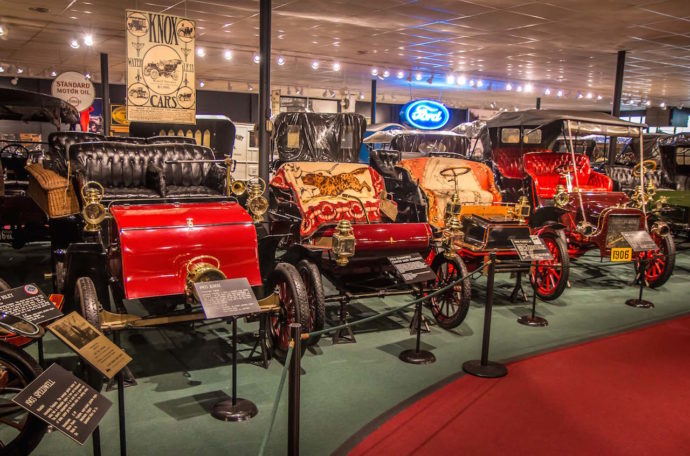
1. The Car & Carriage Caravan Museum
If you love antique cars, or the history of transportation innovation, you’ll love the Car & Carriage Caravan Museum.
Part of the extensive Luray Caverns complex (and free with admission to the Caverns), the museum features around 150 different cars, carriages, coaches, and other vehicles dating all the way back to 1725.
Assembled in the 1950s under the direction of H. T. N. Graves (then-president of the Luray Caverns Corporation), the collection includes some incredibly rare gems. All of them have been meticulously restored to their original splendor.
These unique vehicles range from an ancient Conestoga Wagon to a 1908 Baker Electric, a 1914 Ford Model T Milk Wagon, Rudolph Valentino’s 1925 Silver Ghost Town Car, and an elegant 1932 Rolls Royce Shooting Brake.
There’s also an 1897 Mercedes-Benz, which is one of the oldest cars in America still in operating condition.
READ MORE: The 10 Best Historic & Covered Bridges in Virginia
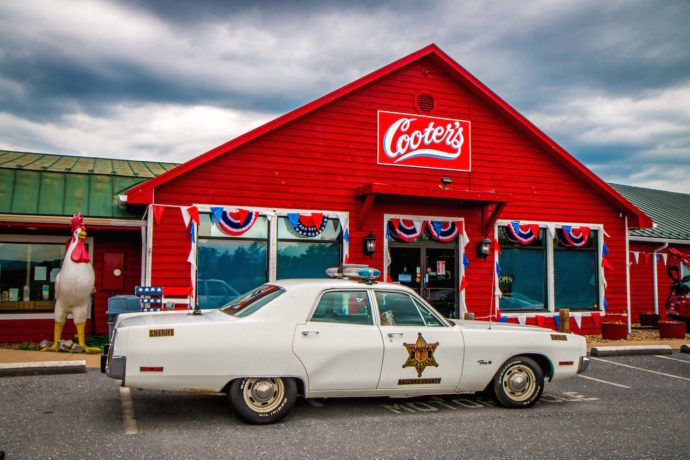
2. Cooter’s Luray
Owned and operated by Ben Jones (who played Cooter the mechanic on the classic ’80s TV show), Cooter’s Luray is a fun roadside attraction aimed at fans of The Dukes of Hazzard.
The third location in the franchise (which is also in Gatlinburg and Nashville TN) features a gift shop, Daisy’s Dixie Diner, and a museum filled with DOH memorabilia, including props, costumes, and backstage photos.
Outside you’ll find vehicles such as the Boss Hogg’s Cadillac, Cooter’s tow truck, and of course the Dukes’ famous General Lee (a Dodge Charger).
Cooter’s in the Valley also offers live music every weekend. Jones fronts Cooter’s Garage Band every Saturday from 1 to 3pm, and meets and greets fans after every show.
There are guest bands every Sunday from 2 to 4pm, and other Dukes of Hazzard cast members are known to drop in from time to time.
READ MORE:The 10 Best Things to Do in Staunton VA
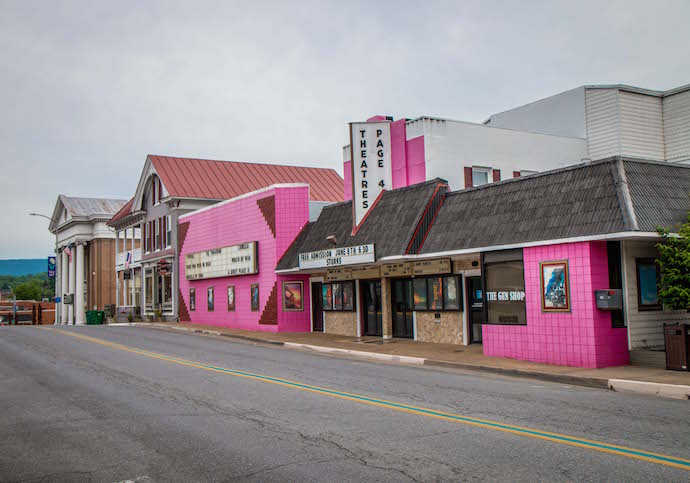
3. Downtown Luray Restaurants & Shops
Downtown Luray doesn’t seem to have the traditional town square you might expect, but it is easy to explore on foot via the Luray-Hawksbill Greenway (more on that below).
For maps and recommendations for things to do in Downtown Luray, start at the Luray-Page County Chamber of Commerce Visitor Center, which is located in the restored historic train depot at 18 Campbell St.
While you’re there, take a tour of the Page Valley Rail Historical Society’s Railroad Museum.
It will give you some insight on the history of the town of Luray, which was established by act of Virginia’s General Assembly in 1812.
From there, most of the best restaurants in Luray are within walking distance, including Il Vesuvio Restaurant & Pizzeria (try the calzones!), and the swanky Circa ’31 (inside the historic Mimslyn Inn).
You’ll also find loads of gift shops, art galleries, and even a brewery (Hawksbill) nearby. You’ll also see many of the 75 buildings that earned Luray’s Downtown Historic District recognition as a national historic district.
READ MORE: Where are the Blue Ridge Mountains? A State-by-State Guide
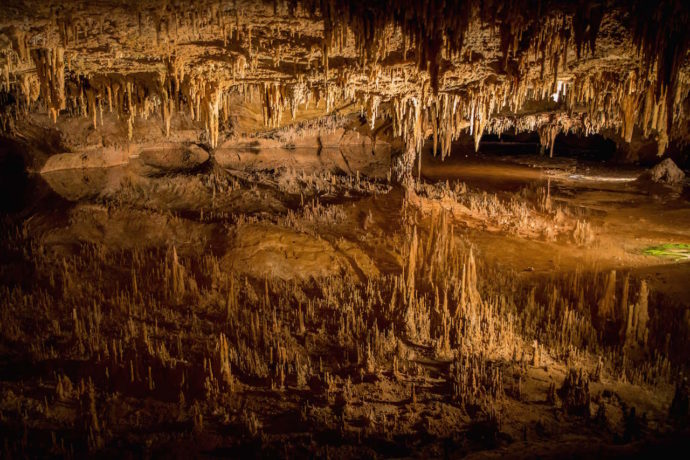
4. Luray Caverns
Discovered by 5 local men in 1878, the 99-acre Luray Caverns is protected as a National Natural Landmark, and truly a must-see for anyone visiting Virginia’s Shenandoah Valley and looking for things to do in Luray VA.
Entering the cave via a curving downhill path (which is wheelchair-accessible), first-time visitors will be awed by the impressive array of cascades, columns, reflective pools, stalactites, and stalagmites.
Noteworthy formations here include the mirrored waters of Dream Lake, the beautiful draperies of Saracen’s Tent, the white flowstone of Titania’s Veil, the Giant Redwood (which measures 40 feet tall and 120 feet around), and the aptly-named Giant’s Hall (the Luray attraction’s largest and deepest cavern).
But the most famous feature in the caverns is the Great Stalacpipe Organ, an incredible creation that taps stalactites of varying sizes with rubber mallets in order to produce tones similar to a child’s music box.
Invented by Leland W Sprinkle in 1954, it’s the largest musical instrument in the world, with performances approximately every five minutes.
Note that your Luray Caverns tickets include admission to the Car & Carriage Caravan Museum, Toy Town Junction, Shenandoah Heritage Village and Luray Valley Museum.
Other family-friendly attractions on the property, including a Garden Maze and Rope Adventure Park, are available for additional fees.
READ MORE: The 10 Best Caves and Caverns in Virginia
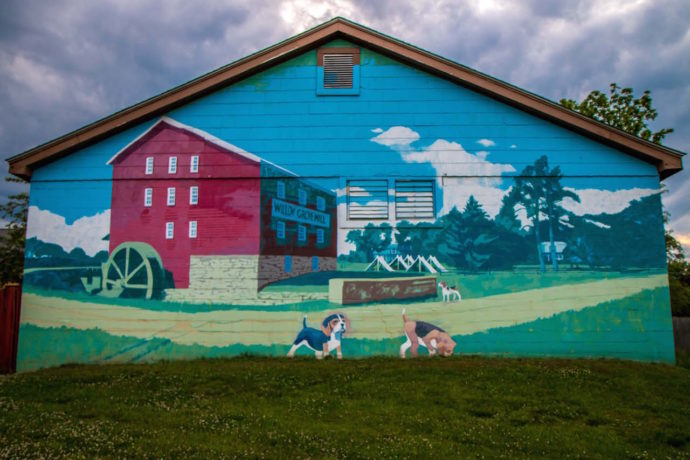
5. Luray-Hawksbill Greenway
Meandering along scenic Hawksbill Creek, this well-maintained multi-use path offers two miles of ADA-accessible paved trails that are perfect for hiking and biking around town.
The 10-foot-wide trail winds through the heart of historic Downtown Luray, with historic homes, shops, museums, restaurants, and other attractions rarely more than a few steps away.
The Luray-Hawksbill Greenway is divided geographically into 5 unique color sections, and includes 24 trailside benches, 8 picnic tables, 6 parking areas, 4 drinking fountains, and 2 restrooms along the trail.
We saw loads of Virginia birds (including ducks, geese, and a heron) and butterflies as we walked beside the creek. And we especially loved the homespun murals painted on many of the buildings along the path.
READ MORE: The 15 Best Virginia Waterfalls for Hiking

6. Luray Singing Tower
Located in a park across the street from Luray Caverns, this 117-foot-tall tower is arguably the most iconic landmark in Luray VA, because you can see it from many of the local attractions.
Officially known as the Belle Brown Northcott Memorial, the tower was erected in memory of the wife of Colonel Theodore C. Northcott (the former president of the Luray Caverns Corporation).
Built in 1937, it’s known as the Luray Singing Tower because of its impressive carillon of 47 bells, which range in size from a mere 12.5 pounds up to a 7,640-pound bell that measures a whopping six feet in diameter.
It’s one of the largest carillons in America, and regularly hosts free recitals on weekends in late spring and summer. You can find the full recital schedule here.
READ MORE: The 15 Best Things to Do in Roanoke VA
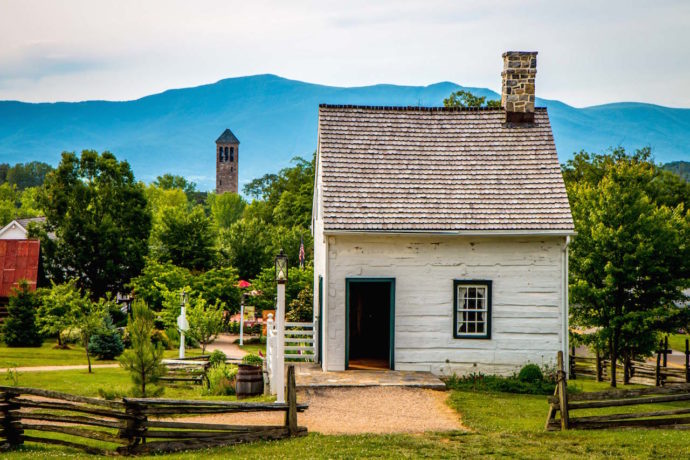
7. Luray Valley Museum & Shenandoah Heritage Village
One of our favorite parts of the vast Luray Caverns complex, this historical museum and living history attraction offer an immersive introduction to Virginia’s Shenandoah Valley of the mid-19th century.
You’ll start at the Stonyman Museum, which features a killer collection of local artifacts. Most of them date from the 1750s to 1920s, but there’s also a Bible from Switzerland circa 1536 that belonged to early Shenandoah settlers.
From there you’ll head outdoors into the Shenandoah Heritage Village, which includes a half-dozen local buildings that range from 135 to nearly 200 years old. All of them contain countless antiques from their respective eras.
The Shenk Farm House (built in 1876) remains on land where the family ran a successful farm for multiple generations.
But the Elk Run Dunkard Meeting House (early 1800s), Bell House (circa 1835), Blacksmith Shop (circa 1850), and Burner Barn (circa 1860) were all moved here from a few miles away, some of them piece by piece.
The newest of the historical buildings– the Hamburg Regular School (circa 1885)– is one of the oldest one-room African-American schoolhouses that remains in the state of Virginia.
READ MORE: The 15 Best Things to Do in Lexington VA & Natural Bridge VA
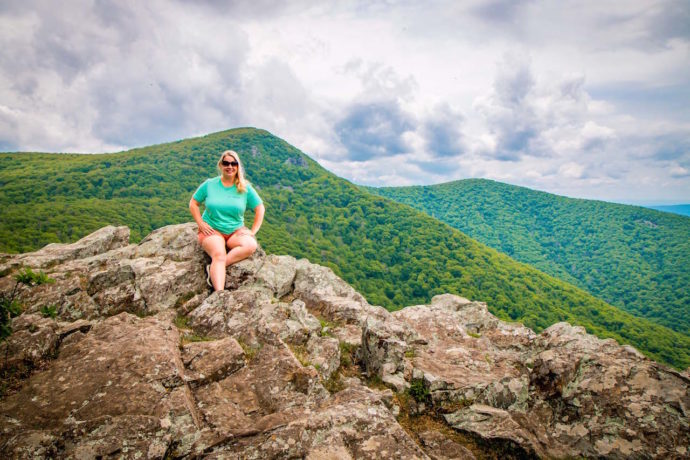
8. Shenandoah National Park
Rising up from the Shenandoah Valley at the northern terminus of the Blue Ridge Parkway, Shenandoah National Park encompasses some 199,173 acres in the heart of Virginia’s Blue Ridge Mountains.
The main road through the park, Skyline Drive, stretches 105 miles along the crest of the Blue Ridge, with the Shenandoah River and valley to the west and the rolling hills of the Virginia Piedmont to the east.
Downtown Luray is just 15 minutes from one of four Skyline Drive entrances, the Thornton Gap Entrance Station, which is located at Mile 31.5. Accessible via U.S. 211.
The entrance is open 24 hours a day and provides access to some of Shenandoah NP’s most breathtaking sections.
There are nearly 70 overlooks in the park. Gorgeous overlooks near Thornton Gap include Range View (Mile 17.1), Hogback Mountain (20.8), Mary’s Rock Tunnel (32), Stony Man (41.7) and Crescent Rock (44).
We also loved the Pinnacles picnic area, which lies right along the Appalachian Trail in VA.
Note that the Skyline Drive speed limit is 35 mph, so take your time on the winding curves and watch out for wildlife such as Black Bears, Wild Turkeys, and White-tailed Deer along the way.
READ MORE: The 10 Best Campgrounds in Virginia
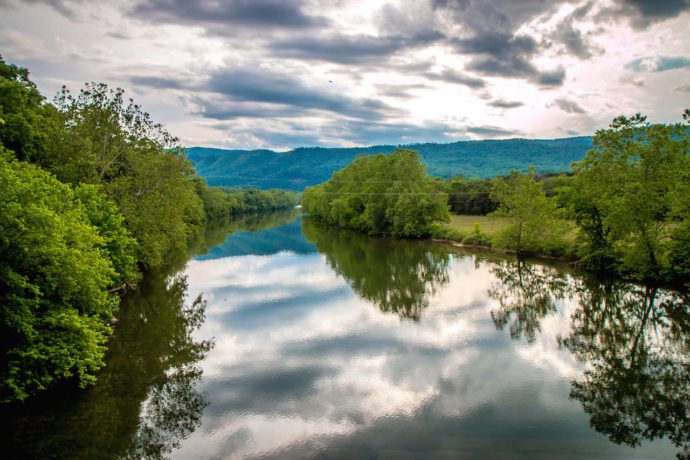
9. Shenandoah River
The main tributary of the Potomac River, the Shenandoah River measures around 55.6 miles long. It forms just north of Front Royal VA, at the confluence of the North Fork and South Fork.
The South Fork meanders northeast some 98.5 miles through the verdant Page Valley, past the towns of Shenandoah and Luray VA.
It’s fed by the myriad streams that tumble down the Blue Ridge Mountains to the east and George Washington National Forest to the west.
With so much natural beauty surrounding it, the South Fork of Shenandoah is a great place for outdoor recreation, with canoeing, kayaking, standup paddle boarding, river tubing, and fishing all popular activities there.
Local Luray outfitters such as Appalachian Adventures offer canoeing, kayaking, tubing, and fishing gear rentals, as well as 1/2-day, full-day, and 2-day guided canoe trips on the river.
READ MORE: The 15 Best Lakes in the Virginia Mountains to Visit
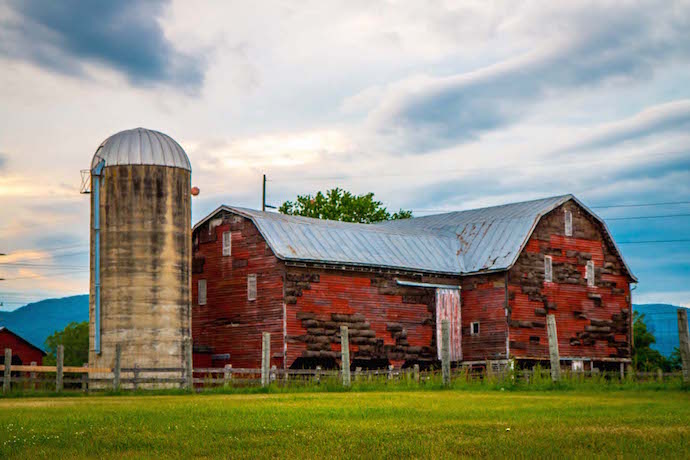
10. Visit Shenandoah VA
The Shenandoah Valley was named after John Skenandoa, a man from the Oneida tribe of the Iroquois Confederacy. Also called Shenandoah, he led 250 warriors in support of the colonials during the Revolutionary war.
Located about 18 miles south of Luray via US-340 South, the tiny town of Shenandoah VA makes for a great day trip, especially if you’re heading to Cooter’s (which is about 1/3 of the way between the towns).
The drive along US-340 is remarkably scenic, with the river and National Forests to the west, the mountains of Shenandoah National Park to the east, and picturesque pastures and farmhouses all around.
Although the city of around 2,300 residents measures just 1.4 square miles, it’s a charming slice of small town Americana loaded with history (especially Civil War-era) and staggering natural beauty.
The Shenandoah Historic District, Shenandoah Land and Improvement Company Office, Strickley-Louderback House, and Welfley-Shuler House are all listed on the National Register of Historic Places.
READ MORE: The 10 Best Civil War Battlefields in Virginia to Visit
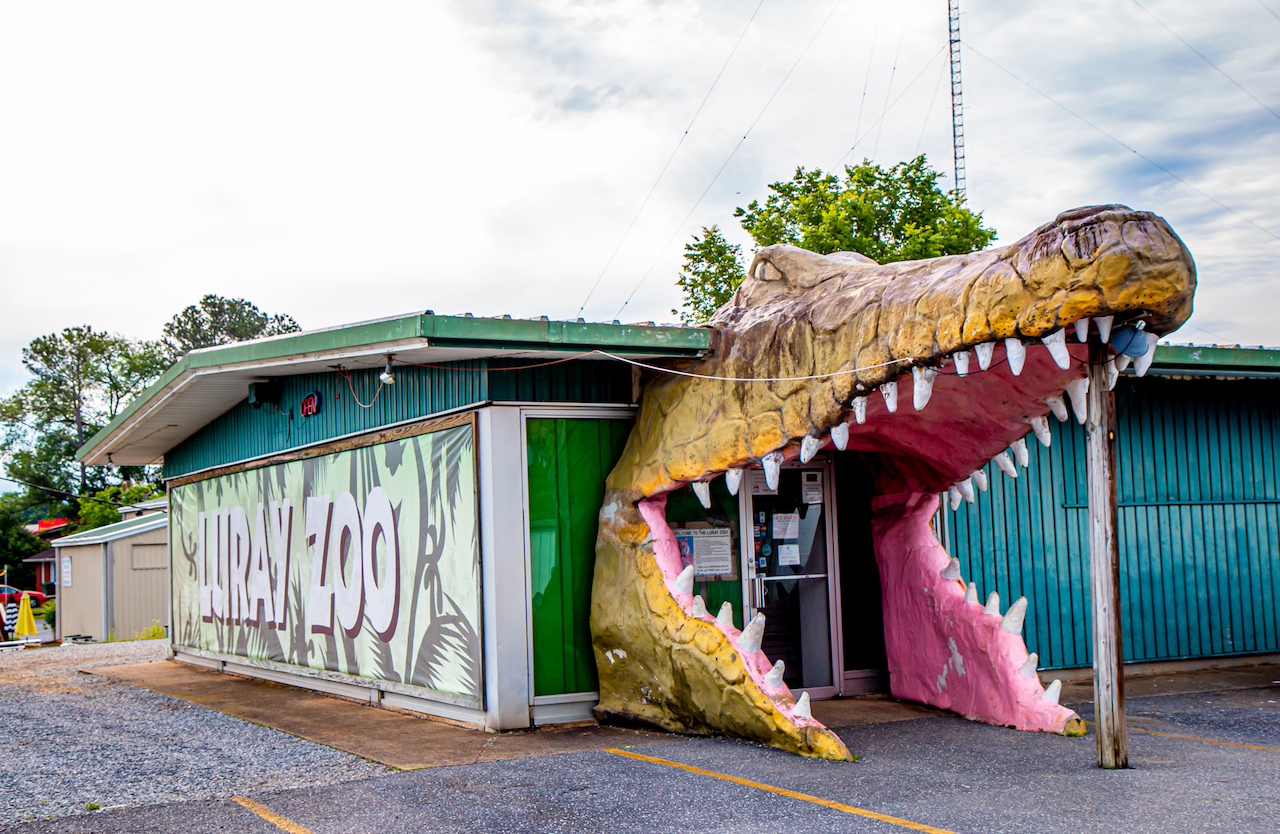
11. The Luray Zoo
Opened in 1982, the Luray Zoo is a privately owned rescue zoo that works with authorities to provide a refuge for confiscated and non-releasable animals.
This small Virginia zoo is home to 200+ rescued animals, including one of the largest exhibits of venomous snakes in the United States and a petting zoo for kids.
Other exciting exhibits at this family-friendly Luray attraction include birds, big cats, primates, and myriad other mammals.
Located just 1.2 miles west of Luray Caverns on Hwy 211, the 3-acre property is open daily from 10AM-5PM, with exceptions posted on their website calendar.
Luray Zoo tickets are $12 for adults (ages 13-55), $11 for seniors (ages 56+), and $6 for children ages 3-12. Children ages 2 and under get in free, and they also offer special discounts for large groups.
READ MORE: 10 Best Virginia Mountain Towns to Visit
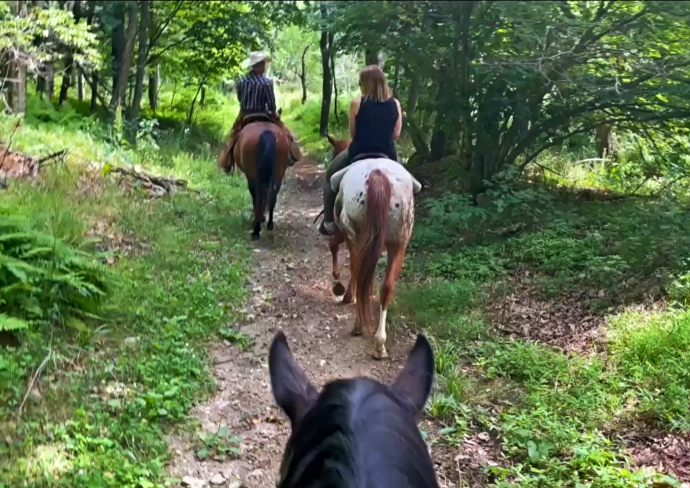
12. Horseback Riding at Skyland Stables
If your visit to Luray VA includes spending time in Shenandoah National Park, Skyland Stables offers a unique way to see it.
They provides guided pony and horseback riding tours, which typically last around an hour and give visitors a chance to explore the park’s natural beauty.
The picturesque trail leads horses and riders across Skyline Drive, past the Limberlost area, and into an old Virginia apple orchard.
Horseback rides at Skyland Stables are offered from May through October, if weather permits, and reservations should be made in advance via the Skyland Stables page on the National Park’s website.
READ MORE: The 10 Best Virginia State Parks in the Blue Ridge Mountains

13. River Hill Distillery
River Hill Distillery is a local favorite in Luray VA. All of their ingredients are sourced from the surrounding area, making it an excellent place to buy corn whiskey, moonshine, and wine.
River Hill has a large variety of reasonably priced goods for purchase, including meats, eggs, and alcoholic beverages like Rye Whiskey and Peach Moonshine.
Opened in 2014, River Hill is widely considered one of Virginia’s best distilleries, with several award-winning spirits.
Their wine selection is also impressively diverse, with unique options like apple, cherry, strawberry, and sweet potato.
READ MORE: The 10 Best Virginia Wineries to Visit for Wine Tastings & Tours
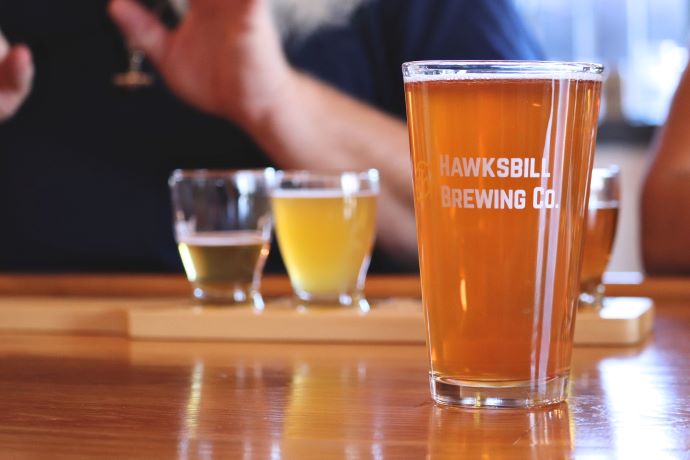
14. Hawksbill Brewing Company
Since opening its doors in Downtown Luray in 2017, Hawksbill Brewing Company has emerged as one of the best new breweries in Virginia’s Shenandoah Valley.
Hawksbill prides itself on incorporating local produce into its unique brews, creating exciting beverages such as Brown Cow Chocolate Milk Stout and The Haymaker Cream Ale.
Those who enjoy non-alcoholic beverages also have an option here: Hawksbill’s Boo Beer is a tasty root beer made with fresh local honey.
They also have a wide selection of Hawksbill Brewing Company merchandise, such as hats, stickers, and glasses, which make for great souvenirs.
READ MORE: The Best Places to Celebrate Christmas in Virginia

15. The Seasons Spa at Mimslyn Inn
For those who seek relaxation on their vacation, look no further than The Seasons Spa at Luray’s historic Mimslyn Inn (one of our favorite Blue Ridge Parkway hotels).
The Mimslyn Inn spa offers a variety of services, including therapeutic massage, reflexology, and hot stone massage, as well as energy healing, Eco-Fin (paraffin alternative), cupping, and aromatherapy foot scrubs.
If you want to unwind with your partner, all of their spa treatments can be given to couples.
Note that all Seasons Spa appointments and cancellations must be made at least 24 hours before the intended service.
READ MORE: 10 Great Romantic Getaways in Virginia for Couples
Hotels in Luray VA
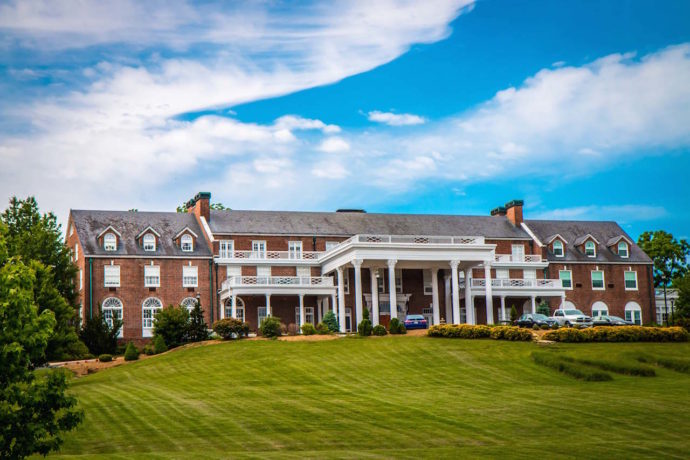
The Mimslyn Inn
Located on W. Main St in the heart of downtown Luray, the Mimslyn Inn (the oldest of the Luray hotels) has been a member of Historic Hotels of America since 2008.
The Inn’s massive size, classic Georgian Revival architecture, and lofty position high on a hill overlooking the town make it an iconic landmark on the local landscape.
Originally opened in 1931, the Mimslyn Inn has since been completely renovated. Today they offer 45 guestrooms and suites, a Manor House, historic cottages, and luxury cottage collection.
We stayed in one of their spacious Blue Ridge Suites, which featured a king-sized bed, queen size pull-out sofa bed, jetted tubs, a small living area with tables and chairs, an electric fireplace, and stunning views of the Blue Ridge Mountains to the east.
The Inn also features a luxury spa, the snazzy Circa 31 Restaurant, the more casual Speakeasy Bar & Restaurant (with its Prohibition-themed drink menu). –by Bret Love; photos by Bret Love & Mary Gabbett unless otherwise noted

